|
In 2016, there are more parenting books on the market than ever -- some of which are super awesome (see also: Mind in the Making: The Seven Essential Life Skills Every Child Needs and How to Raise an Adult: Break Free of the Overparenting Trap and Prepare Your Kid for Success).
And yet! Half of what we think we know about kids... is a total major marketing gimmick. And, alarmingly, it turns out that our inability to recognize these gimmicks can have harmful effects on our children in the long run.
Today, I wanted to highlight some of these myths and the financial incentives behind them. Did I miss any? Let me know in the comments!
1. Girls like pink and boys like blue. By now, I’m pretty sure everyone on the whole internet has heard that pink used to he the “boy color,” and blue used to be the “girl color.” After all, pink is the pastel version of red, which was seen as a bold and manly color. Meanwhile, blue was seen as a color of virtue and purity. Which is why many early Disney Princesses were dressed in blue, not pink:
Why and how the blue/pink role reversal happened is up for debate – but what’s clear is that marketers have a very good reason to indoctrinate parents and children with the idea that color is powerfully entwined with gender:
It can literally double their sales. Think about it. Say you have a son, and you buy him a chest full of balls, blocks, paints, stickers, and other toys. And then – mazel tov! – you have a daughter. Because you believe that boys and girls like different colors -- and because they themselves have learned that they should like different colors -- you cannot simply give your daughter your son’s hand-me-downs. You can’t ask them to share their toys. No. You need to buy another one of everything you already have, but in pink. It’s genius! Even more genius than the time De Beers completely invented the “tradition” that men have to spend three months’ salary on their fiancé’s engagement ring. (Not for me, though – I’d rather we spend our money on a six-month honeymoon than some stupid ring.) The pervasiveness of this cultural “norm” is so extreme that, as Peggy Orenstein wrote in her New York Times Bestseller Cinderella Stole My Daughter: Dispatches from the Front Lines of Girlie-Girl Culture, “When my daughter wore a green bike helmet, the other girls asked her why she was wearing a 'boys' helmet. When my daughter explained that green is for both genders... she was met with suspicion.” Young minds are like a sponge – and children’s toy and clothing companies have done an excellent job of drilling in their pink/blue message.
Though, in all fairness, I'm no better. I'm an adult, and I still love pink. Err.. not "still," I guess. When I was a child, I was weirdly obsessed with red. But now I love pink.
2. Girls innately like dolls. Once again, walk into any preschool classroom and you’ll probably see a lot of gender-segregated play – boys with trucks and blocks, and girls with dolls, kitchen sets and Barbies. But, once again, it turns out that this isn’t an innate difference, but a learned one. See, until the late nineteenth century, girls didn’t play with dolls very much. According to an 1898 survey, fewer than 25% of girls cited dolls as their favorite toy. And then, suddenly, just a few years later, every little girl had a baby doll. Why? Industrialization had shifted most families' income source outside of the home -- meaning that middle class parents no longer felt pressured to have more than one child (when income comes from the home, children provide free labor, incentivizing larger families). Birth rates among white women plummeted in what President Theodore Roosevelt called "race suicide." Allegedly, Teddy's "obsession" with birth rates inspired him to initiate an effort to teach (white) girls about the joys of motherhood -- via dolls. Meanwhile, boys were given trucks and blocks, to help “prepare” them for life in the industrial age. And, because kids’ brains are so sponge-like – it worked. Toy companies latched onto the trend because, as previously mentioned, the fastest way to make more money is to segregate your market. The more segregated boys become from girls, the less boys and girls will share toys, and the more money parents will end up spending on toys.
Of course, you could just rent unlimited toys from San Jose startup Pley. Learn more >
3. Boys like trucks. I’ve said it a million times, but I’ll say it again: real feminists don't "hate men," and do care about men’s issues. And here's a men's issue that really gets to me. Parents, teachers and the media looooove fawning over girls who like baseball, Legos, and other “boy” interests. Tomboys are awesome, and they make their daddies proud. But the reverse is not true for little boys. From a very early age, they are socially conditioned – especially by their fathers – to only play with boy toys. I’ll never forget the afternoon I wrote a play, and then began “rehearsing” it in the backyard with a two of my cousins, one of whom was a boy. Because my play only featured female characters… You guessed it. I cast my male cousin as a girl. And he obviously loved it! We put him in a dress and painted his face and began acting out the scenes. Everything was great and everyone was laughing… Until my uncle got home. When he saw the makeup on his son’s face, he became enraged. He turned red. He yelled. He demanded that Mark go inside and wash his face immediately. My guess is that Mark never engaged in that kind of play again. I wouldn’t have, if I were him. His dad’s response was kind of scary. But, unfortunately, not all that uncommon. Which is sad – research indicates that boys want a broader scope play than parents typically “allow” them. Orenstein cites a psychology study of boys’ play preferences, which found that boys in a room with “girl,” “boy,” and gender-neutral toys overwhelmingly chose to play with the “boy” toys... Unless they believed no one was watching them. When they believed no one was watching, they were more equally likely to play with any of the toys. Of course, this is much more the fault of parents (err, dads) than evil marketing geniuses. Nevertheless, companies encourage and profit from this kind of behavior, rather than promoting positive social change. (And, to be fair, they have every right to do that. They are private companies, and their goal is to maximize profits. I’m just saying… Parents – do better. Studies show that the healthiest thing you can possibly be is somewhat androgynous. People who are too masculine or too feminine have all kinds of mental health problems. People who adopt positive qualities from both genders are the happiest and healthiest.) Two last points, here: 1. Dads: if your kid is straight, playing dress-up with his cousins isn’t going to turn him gay. And if he’s gay, forcing him to play with Teenage Mutant Ninja Turtles all the time is not going to “straighten” him out. 2. Gender research is super complicated. I've mentioned some research here that supports my point about social conditioning that drives girls to dolls and boys to trucks. But I feel I should also mention that multiple studies have found that a child's digit ratio (the length of their index finger relative to their ring finger), which is directly proportional to how much testosterone they received in the womb, predicts a child's interest in stereotypically male toys. Additionally, studies on vervet and rhesus monkeys (who have never been exposed to human toys) show that male monkeys prefer "boy" toys and female monkeys prefer "girl" toys. But researchers have no idea why. 4. Baby boys and baby girls should be dressed differently. Before boys wore pink and girls wore blue, all babies wore androgynous white dresses, which they wore until they were two or three years old. Granted, the reason was more about practicality (back then, the only way to clean clothes was to boil them, so of course baby stuff was white) than equality. But still – clothing companies have seized the opportunity to segregate yet another market that wasn’t previously segregated – all in the name of profit. And, look. I totally get the appeal of dressing your baby girl up like a princess or your baby boy like a baseball player. It is adorable. But walking through Von Maur the other day, I noticed that the kids’ section had been divided and sub-divided into about four different age groups within each gender category. I couldn’t help but ask myself: is it healthy?
Not… perfectly. See, the more salient you make a baby’s gender, the more people treat said baby like its gender.
Studies show that when people play with a baby that’s dressed in pink (regardless of the baby’s gender), people interact with it in a specific way. They hold "her" facing inwards, facing the chest, the face, the bosom. And they pat it on the head and tell it it’s pretty and encourage it to go to sleep. Meanwhile, when people play with a baby that’s dressed in blue (again, regardless of gender), they hold it facing outward – facing the world. Facing wheels and cars and actions and activities. Facing ticking clocks and tools and machines. And they don’t tell it to go to sleep. They get out a truck or a puzzle or a block set and encourage the baby to play. As I’ve said time and time again, early learning experiences matter. That's why these seemingly small differences could have a lifelong effect on children’s spatial reasoning, confidence, and other skills. One of the biggest challenges in gender psychology is distinguishing nature from nurture -- but we also know that nurture can become nature, which I explain further in the next section. 5.“Tween” is an actual developmental stage. Psychologist Erik Erikson once laid out a psychosocial model of development, which recognized various struggles and thought patterns of different stages of life. Although his model was based on a very small sample size, it was surprisingly accurate, and has been used by many psychologists over the years. Nowhere on this model was “tweens” a thing. Nowhere in psychology is there any evidence about the existence of tweenagers. This concept was completely made up by marketers in the 1980s, in an effort to – you guessed it – further segregate the market and increase profits. In this case, it’s a market that’s less cute and innocent, and more stylish and “cool” – which, when it comes to girls’ and women’s fashion, usually means “sexy.” Personally, I find it disturbing. I don’t think eight-year-olds need to replace their “girls” underwear with “tween” thongs. I don’t think nine-year-olds need push-up padding in their (increasingly tiny) bikinis. I don’t approve of sexualizing young girls – not because I’m afraid it will rouse the predators (although it might), but because I’m afraid of what it will do to the “tweens” who partake in these fashion trends. I think the “tweenage” years are a time when parents should focus not on how their child looks, but on what they do. After all, as I wrote in In One Nasty Tweet, Kim Kardashian COMPLETELY Undermines Her Silly "Nude Selfies Are Empowering" Thing, Sure, I love the way I look -- but that's not why I value myself. That's not why I want others to value me. I know I have more to offer. And when you value yourself for your kindness, sense of humor, intelligence and other non-sex things, other women will never make you feel bad about yourself. Even if they are skinnier or more beautiful than you, you’re not going to feel bad about it.
One thing the marketers do get right is that, around age of twelve, children’s brains begin “pruning,” a process that eliminates the neural connections that children don’t use regularly.
After that, it gets a lot harder for children learn new languages. It gets a lot harder for them to recover from brain injuries. They begin to think and learn differently. But, notably, they have picked up on your values and attitudes about life, school, religion, politics, and gender – and these values will likely survive the pruning process and stick with them for a long time. As they begin adolescence, they enter a stage of mild rebellion – they begin pushing limits and boundaries. Defying authority such that they can carve out their own identity. Your teens will still listen to you – but not like they used to. You’ll have a much easier time connecting with and influencing your “tween” than your teen. Meaning that, instead of dressing them all sexy and shopping and stuff, you should focus on values, courage and personal autonomy. This is obviously easier said than done. If everyone else in your daughter’s class is dressing like a tween, she will want to, as well. But, as I wrote in Go Ahead and Let Your Tween Dress “Slutty” For Halloween – Just Make Her Build The Costume Herself,” Talk about attracting the right kind of attention -- about valuing yourself for who you are. If you base your self-worth on your sexiness, how can you expect others to like you for anything but that? Acknowledge that it's fun to feel beautiful, like all eyes are on you. But what are the other reasons she wants people to like her? Do a self-affirmation exercise. Have your daughter write down five things that she loves about herself -- that aren't about how she looks. 6. Phones and tablets are an engaging and educational way for kids to learn. I’m not going to say that all iPhone games and all EdTech is worthless. There are some really great programs out there – and I think this could be especially beneficial for kids in disadvantaged communities. But. A lot of edtech is junk. This is true for a lot of reasons. First, even when an online learning game boasts that kids’ test scores went up after downloading their program, I’m still a bit skeptical. Test scores aren’t super indicative of learning, motivation, curiosity, or understanding. Test scores are mostly indicative of socioeconomic status. Yeah, test scores can matter when it comes to middle school, high school and college admissions, so improving test scores is important – to some degree. But there are much better ways and things for a child to learn. I’m going to repeat a story I told in How iPhones and iPads Kill Happiness and Creativity. As I was flipping through the in-flight magazine, I noticed a page with pictures of the airline's different planes. The four-year-old in the seat next to me asked, "What's that?"
What do you think would have been more educational for this little girl? Improving her social and communication skills by talking with an adult, who has the ability to provide scaffolding (i.e., asking questions and making comments that help kids think at a higher level than they could on their own)? Applying her problem solving skills in a real-world situation? Making observations and deductions and discoveries about the world around her?
Or swiping her finger across a glowing screen? You don’t need an app to make your child smarter. What you need… is fifteen minutes. Give them fifteen minutes per day of your undivided attention. Ask them questions. Guide their thought process to help them come up with their own answers. Let them get it wrong – and then talk about what went wrong and what you can try differently next time. For a more complete explanation, check out The Best Way to Give Your Child a Creative, Entrepreneurial Mindset (Hint: It Has Nothing to Do With Flashcards). ** Parents, teachers, psychologists – what are some other myths and misperceptions about childhood that I missed? Share them in the comments, or find me on Facebook or Twitter.
0 Comments
Leave a Reply. |
About the Author

Eva is a content specialist with a passion for play, travel... and a little bit of girl power. Read more >
Want to support The Happy Talent? CLICK HERE!
Or Find me on Patreon!
What's Popular on The Happy Talent:
Trending in Dating and Relationships:
What's Popular in Science: Playfulness and Leisure Skills:
Popular in Psychology and Social Skills:
Categories
All
|
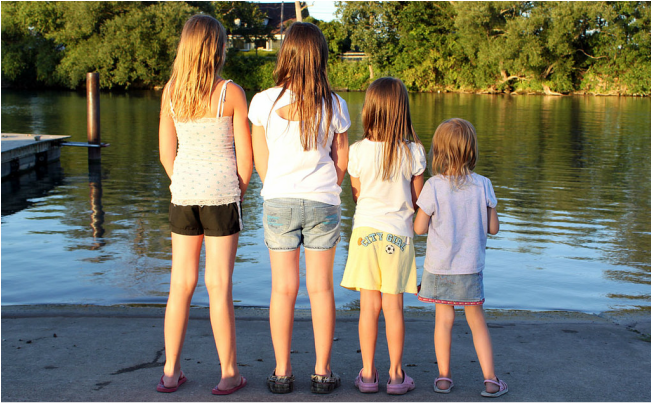







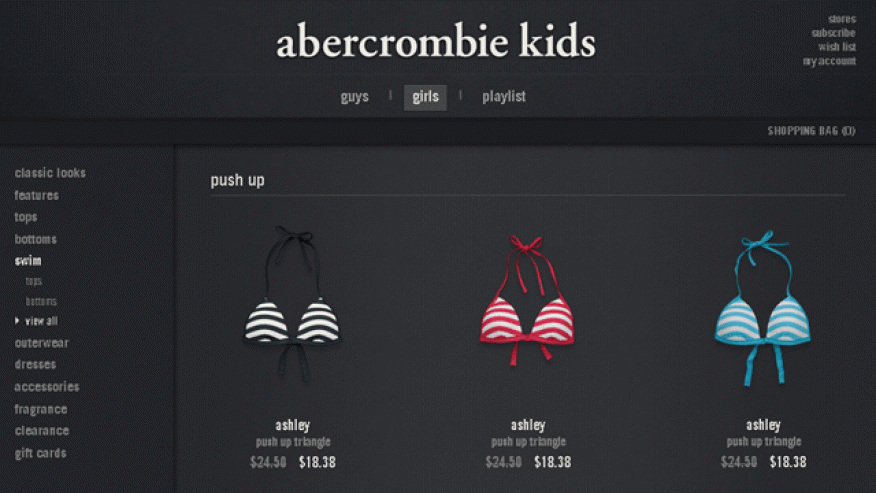



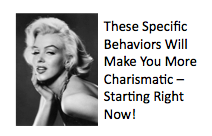

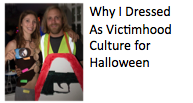

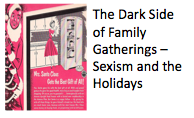



















 RSS Feed
RSS Feed